Your Favorite Shorebird Image?
All are invited to leave a comment letting us know which of today’s four featured shorebird images is your favorite and why you made your choice. Though I love them all, I have a tie for first. And I have my reasons 🙂
What’s Up?
With mostly cloudy-bright skies, a decent breeze from the NNE, lots of shorebirds, and the perfect low water level, conditions at the East Pond at Jamaica Bay Wildlife Refuge were far better on Wednesday than they’ve been in many years.
Today is 11 August 2022. It is raining hard on Long Island this morning. The weather for Nickerson Beach is looking good for this afternoon, as is the weather for Friday morning at JBay. If you’d like to learn shorebird photography, consider joining me at the East Pond on Friday morning. Details below. Wherever you are, and whatever you are doing, I hope that you too have a great day. This blog post took about two hours to prepare and makes one hundred forty days in a row with a new one.
So far, eight folks have been in touch about joining me at either Nickerson or JBWR in the coming weeks for an In-the-Field session or two. The first window for doing shorebirds at the East Pond at Jamaica Bay Wildlife Refuge is closing now, the second window is from 24-26 August. See the additional details below.
Please remember to use the B&H and Amazon links that are found on most blog pages and to use the BIRDSASART discount code at checkout when purchasing your new gear from Bedfords to get 3% back on your credit card and enjoy free second-day air FedEx. Please, also, consider joining a BAA IPT. You will be amazed at how much you will learn!
|
|
|
Clockwise from the upper left corner back around to the center: Wilson’s Phalarope, JBWR; just fledged Common Tern, Nickerson; Black Skimmer, adult skimming, Nickerson; Black Skimmer killing tiny skimmer chick, Nickerson; American Oystercatcher foraging at sunrise, Nickerson; Common Tern chick swallowing baby bluefish, Nickerson; Short-billed Dowitcher, juvenile, double overhead wing stretch, JBWR; Black Skimmers, predawn flock blur, Nickerson; Black Skimmer, 10-day old chick, Nickerson. Click on the card to view a larger version. Nickerson Beach/East Pond JBWR composite |
Nickerson Beach/East Pond at Jamaica Bay (JBWR) In-the Field Workshops
Both Nickerson Beach and the East Pond at JBWR offer some of the best midsummer bird photography on the planet. Hundreds of pairs or Black Skimmers and Common Terns along with more than a dozen pairs of American Oystercatchers breed at Nickerson each season so there are lots of chicks of all sizes and handsome fledged young to photograph. Provided that the water levels are low, hundreds of young shorebirds in their handsome fresh juvenile plumages stop by the pond each August on their way south.
Nickerson often reveals nature at it rawest, most basic level. Most days we get to photograph all sorts of dramatic behaviors ranging from skimmers and terns fishing and feeding (and tending) their you. There are often chances to shoot a variety of predatory encounters — gulls eating large skimmer chicks, skimmers eating skimmer babies, and Peregrine Falcons hunting. And rarely, if we are lucky, Peregrine Falcons catching! Consider joining me to learn a ton both about bird photography and the birds.
I am taking the Auto Train north on 31 July and will happily spend all of August on Long Island. I head south on 31 August and should be back home on 1 September (barring anything unforeseen). I am offering In-the-Field sessions at both Nickerson Beach and the East Pond at Jamaica Bay Wildlife Refuge. If you are interested, please get in touch via e-mail or text me at 863-221-2372.
Whether you are a local or would like to fly in for several days of instruction — a sort of private, or small group. — at worst, IPT, LMK via e-mail so that we can work on a schedule that could possibly include both Nickerson and Jamaica Bay.
|
|
|
This image was created on 10 August 2022 at the East Pond, Jamaica Bay Wildlife Refuge. Queens, NY. While sitting on wet mud, I used the flattened, no-longer available except from BIRDS AS ART, Induro GIT 304L tripod/Levered-Clamp FlexShooter Pro-mounted Sony FE 600mm f/4 GM OSS lens with the Sony FE 1.4x Teleconverter (at 840mm) with The One, the Sony a1 Mirrorless Camera. The exposure was determined via Zebras with ISO on the Thumb Wheel. ISO 1250: 1/500 sec. at f/5.6. AWB at 7:08:59am on a variably cloudy morning. Tracking: Zone/AF-C with Bird Eye/Face Detection performed perfectly all morning long by accurately tracking the birds’ eyes (as long as the birds were not moving quickly, filling the whole frame, or turning their heads away). Image #1: Short-billed Dowitcher in fresh Juvenal plumage |
Off to a Great Start
I analyzed the situation, picked what I thought would be the best spot, flattened the tripod, and sat down in the mud. Within minutes, the birds came. The Semipalmated Sandpipers (almost all adults) and the Lesser Yellowlegs (all juveniles) flew in quickly right in front of me. Many of the semi-Ps were too large in the frame. The sun was out briefly, and I made some good Lesser Yellowlegs images. The sun disappeared just as a fresh juvie short-billed dow flew in. With the north wind, most of the birds would forage from my left to my right, to the north. I was patient and waited for the SBD to work its way into the clear.
|
|
|
This image was also created on 10 August 2022 at the East Pond, Jamaica Bay Wildlife Refuge. Queens, NY. Again, while sitting on wet mud, I used the flattened, no-longer available except from BIRDS AS ART, Induro GIT 304L tripod/Levered-Clamp FlexShooter Pro-mounted Sony FE 600mm f/4 GM OSS lens with the Sony FE 1.4x Teleconverter (at 840mm) with The One, the Sony a1 Mirrorless Camera. The exposure was determined via Zebras with ISO on the Thumb Wheel. ISO 1000: 1/800 sec. at f/5.6. AWB at 7:24:08am on a variably cloudy morning. Tracking: Spot S/AF-C with Bird Eye/Face Detection performed perfectly all morning long by accurately tracking the birds’ eyes (as long as the birds were not moving quickly, filling the whole frame, or turning their heads away). Image #2: Juvenile Lesser Yellowlegs and shorebird flock |
Nervous Nellies
The birds were quite slightly. The flocks would take off en masse, circle a few times, and re-land. With no birds in front of me, I focused on the single Lesser Yellowlegs in the canter of the frame in hopes of creating a decent bird-scape. I was framing the shot when a swirling, circling flock of shorebirds flew into the frame. Doing as I preach, I pressed and held the shutter button until all the flying birds had left the frame.
As I say here often, one of the keys to success in nature, wildlife, and bird photography is to strive to create something different. In 39 years of photographing at the East Pond, I had never created an image remotely like this one.
The Lesson
When unexpected action happens, press the shutter button.
|
|
|
This image was also created on 10 August 2022 at the East Pond, Jamaica Bay Wildlife Refuge. Queens, NY. While sitting on wet mud, I used the flattened, no-longer available except from BIRDS AS ART, Induro GIT 304L tripod/Levered-Clamp FlexShooter Pro-mounted Sony FE 600mm f/4 GM OSS lens with the Sony FE 1.4x Teleconverter (at 840mm) with The One, the Sony a1 Mirrorless Camera. The exposure was determined via Zebras with ISO on the Thumb Wheel. ISO 1600: 1/1600 sec. at f/5.6. AWB at 8:53:14am on a variably cloudy morning. Tracking: Zone/AF-C with Bird Eye/Face Detection performed perfectly all morning long by accurately tracking the birds’ eyes (as long as the birds were not moving quickly, filling the whole frame, or turning their heads away). Image #3: Juvenile Wilson’s Phalarope |
What’s a Good Bird?
Good birds are birds that are uncommon at a given location. In most years, small numbers of phalaropes visit the East Pond. Wilson’s are the most frequent visitors, followed by Red-necked. Wilson’s are recorded in most years. Single birds are most frequent, but small groups of three to six might be found on rare occasion. Red-neckeds are often missed. I do not think that Red Phalarope –Grey Phalarope across the pond, Phalaropus fulicarius), has ever been recorded at Jamaica Bay (though there may have been one occurrence). Please correct me if I am wrong.
I had walked to the Raunt to check things out and a birder mentioned that he had seen one that morning. As I walked back to the South Flats, I was thrilled to see the juvenile Wilson’s swimming around close to shore. So, I got down on the ground and went to work. And yes, Wilson’s Phalarope is a good bird in pretty much all shorebird locations on the east coast of North America.
|
|
|
This image was also created on 10 August 2022 at the East Pond, Jamaica Bay Wildlife Refuge. Queens, NY. While sitting on wet mud, I used the flattened, no-longer available except from BIRDS AS ART, Induro GIT 304L tripod/Levered-Clamp FlexShooter Pro-mounted Sony FE 600mm f/4 GM OSS lens with the Sony FE 1.4x Teleconverter (at 840mm) with The One, the Sony a1 Mirrorless Camera. The exposure was determined via Zebras with ISO on the Thumb Wheel. ISO 1600: 1/1600 sec. at f/5.6. AWB at 8:53:14am on a variably cloudy morning. Tracking: Zone/AF-C with Bird Eye/Face Detection performed perfectly all morning long by accurately tracking the birds’ eyes (as long as the birds were not moving quickly, filling the whole frame, or turning their heads away). Image #4: Marbled Godwit |
Another Good Bird
Marbled Godwit is another good bird for JBay. In most years, one or two may be present during southbound migration from late June through November. I had seen the MAGO flying around at the south end. When the phalarope flew away, the godwit landed to the south. I made my way slowly toward the bird as it foraged among towering Canada geese. Again, I waited for the bird to come to me rather than trying to approach it closely and cause it to fly away. My strategy worked perfectly.
In 1976 or 77, I walked onto the South Flats at the East Pond on a still August morning. As the tide in the surrounding bay was “wrong,” there was only a single bird present. It was a large cinnamon colored shorebird with a long slightly upcurved bill. The bill was dusky grey at the end, and the proximal half was a lovely alabaster pink. It was my very first Marbled Godwit. I had no idea at the time that seeing the one bird would change the course of the remainder of my adult life. But it did. And all for the good.
Typos
With all blog posts, feel free to e-mail or to leave a comment regarding any typos or errors.

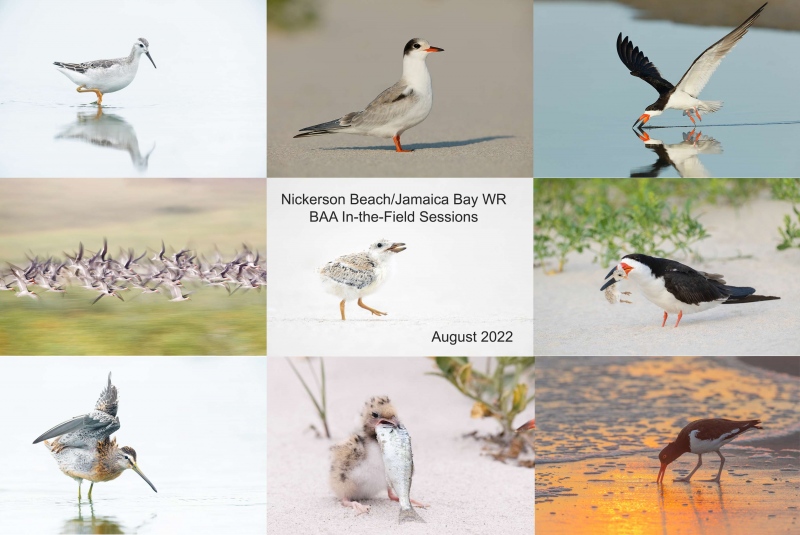
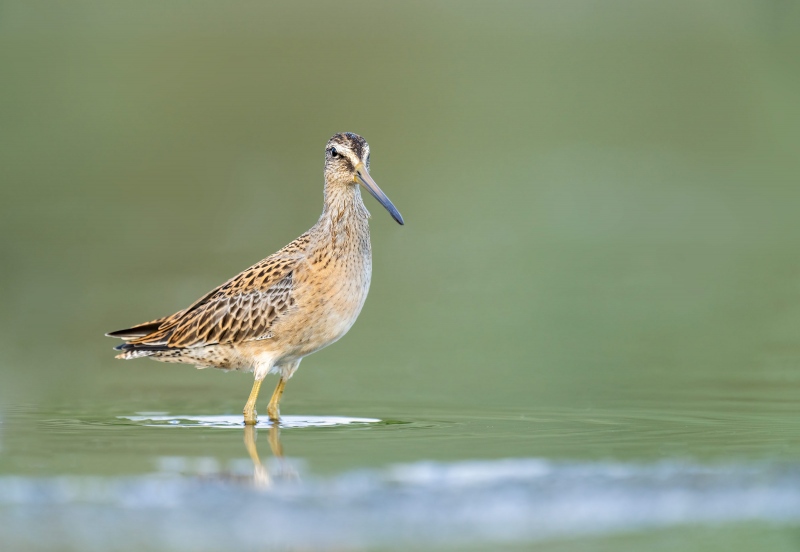
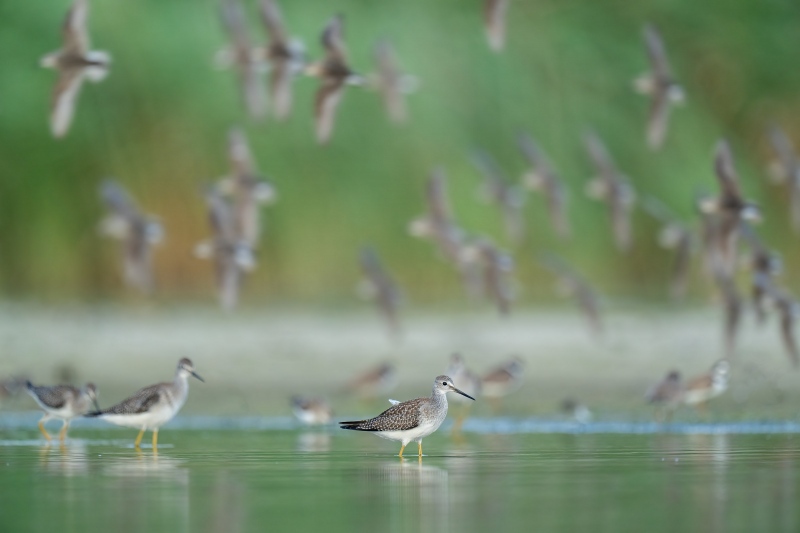
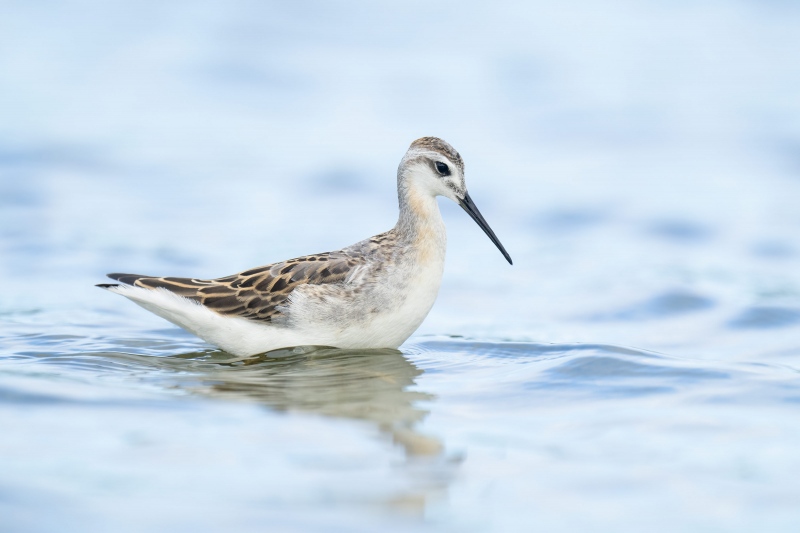
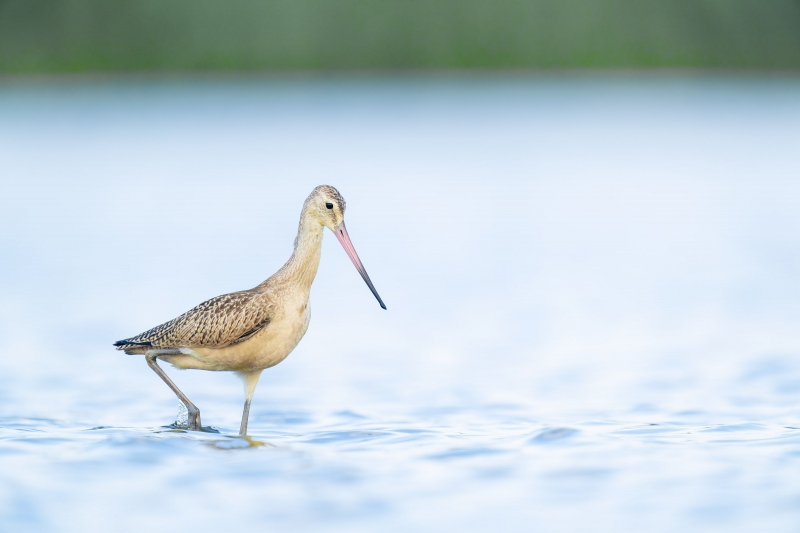













I am agreement with the majority of comments above. All have great colors and mood, but No. 2 would have to be my favorite, due to the varied composition.
My kind of day! Love them all, but I think I’m partial to #4. Love the low angle with OOF foreground, the narrow strip of focus, the OOF background and, most importantly, the story of the bird that started it all.
Thanks, Pugs. Your comment put a big warm smile on my face.
with love, artie
#2 is my favorite because it is a different composition than one normally sees.
I agree. That is one of my two 🙂
with love, artie
all 4 are outstanding but my favorite one is # 2 as it is so different from what one gets to see published normally and I am a great fan of depth of field which is superbly illustrated in this image
Thank you, dahling 🙂
with love, a
ps: or the lack of d-o-f!
Artie, all 4 are good and interesting and #2 is really funny with such so many!!
I would be happy to have made any of the portrait shots – #s 1,3, and 4, but it’s image #2 that I like best. The context gives you the sense of what you’d see if you were there, while the sharp focus on the nearest yellowlegs provides a clear focal point. Ideally there wouldn’t be any overlap between the subject and the blurred birds in the background, but I don’t really mind it because it adds to the sense of chaos occurring behind the subject.
Thanks, Matt. With that many birds there will almost alway be some merges.
with love, artie
Artie
#1 the head angle seems a bit off looking at me a bit to much and slightly left would be better IMO.
#3 is a close dreamy photo and head angle and colors are very nice.
#4 is really much better with the foot coming out of the water and the background I love the green off in the distance.
#2 IS KILLER and so my favorite the low shooting point, the oof birds flying in the back, the few oof birds in the water and then the main focus yellowlegs! It all blends perfectly together imo!
#2 is tops followed by #4 just simply amazing shots but #2 Gets my vote!!
Always with love b
Artie in @2 the 2 little white spots in the water are a little distracting and the 2 behind him near the oof bird IF you were to clean anything up like you do.
Thanks, Bob. I agree, but having cleaned up many dozens of larger, more distracting spots I left those.
with love, and see you in Homer.
a